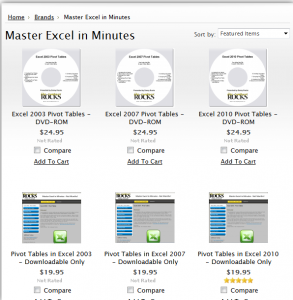Have you ever been frustrated when you:
- Entered a “Time Value” in a cell only to find that Excel did not recognize it as a “time value?”
- Wrote a formula to calculate the elapsed time between “start and finish” only to find that Excel returned a “date” (e.g. 1/15/2008) and not a number?
- Wrote a formula to calculate the hours worked for your “Graveyard Shift” (those whose work hours cross Midnight) only to get a cell full of ########?
- Used the AutoSum function to calculate the total hours worked in a week only have Excel return a “silly” total like 1.7915?
Well, join the club! Most of my clients have experienced these four frustrations when they try to calculate “time values” in Excel. In this short video lesson, I will demonstrate how to solve each of these four frustrations.
I’d like to receive your feedback on this video lesson. Have you ever encountered this frustation? Did my explanation help you? What additional topics would you like me to cover?
You can email me – danny@thecompanyrocks.com
Here are the steps to follow in this video lesson:
- Excel stores Time values as decimal numbers. Midnight is 0.00; 6:00 AM is 0.25; Noon is 0.5
- Be careful when you enter “time values” into a cell. 12:00PM is considered “text.” You need to include a SPACE before the PM e.g. 12:00 PM in order to tell Excel that this is a “time value.”
- Use this Keyboard Shortcut Ctrl+Shift+~ (Tilde) to see how Excel stores a “time value” in a cell.
- When calculating “elapsed time”, use a “Custom Format” for the cell with the Formula E.g. [h]:mm
- When you calculate “elapsed time” for cells that “cross midnight” you will get ###### as your result unless you use a formula like =MOD((End_Time-Start_Time), 1)
- When you total “time values” that will exceed 24 hours (E.g. Hours worked in a week) format the cell containing the formula with a “Custom Format” e.g.[h]:mm



